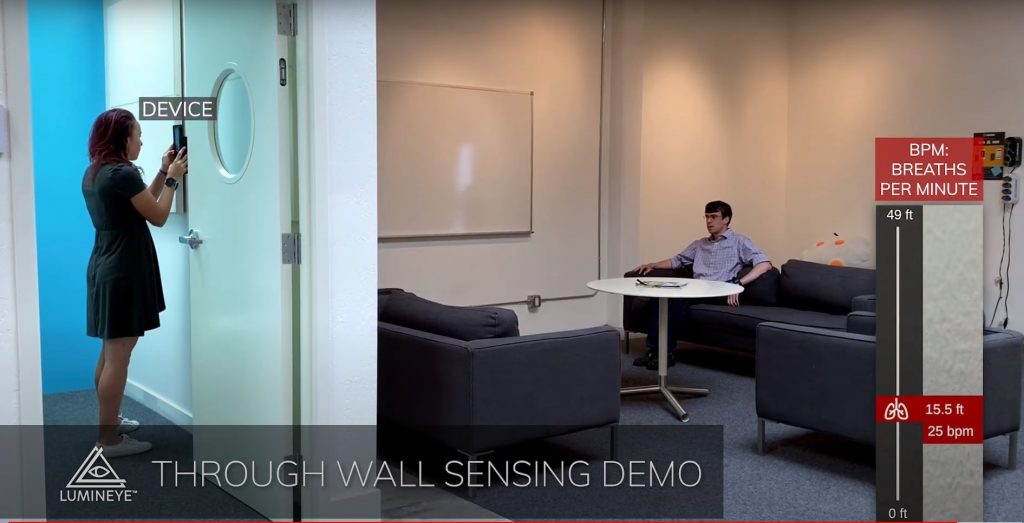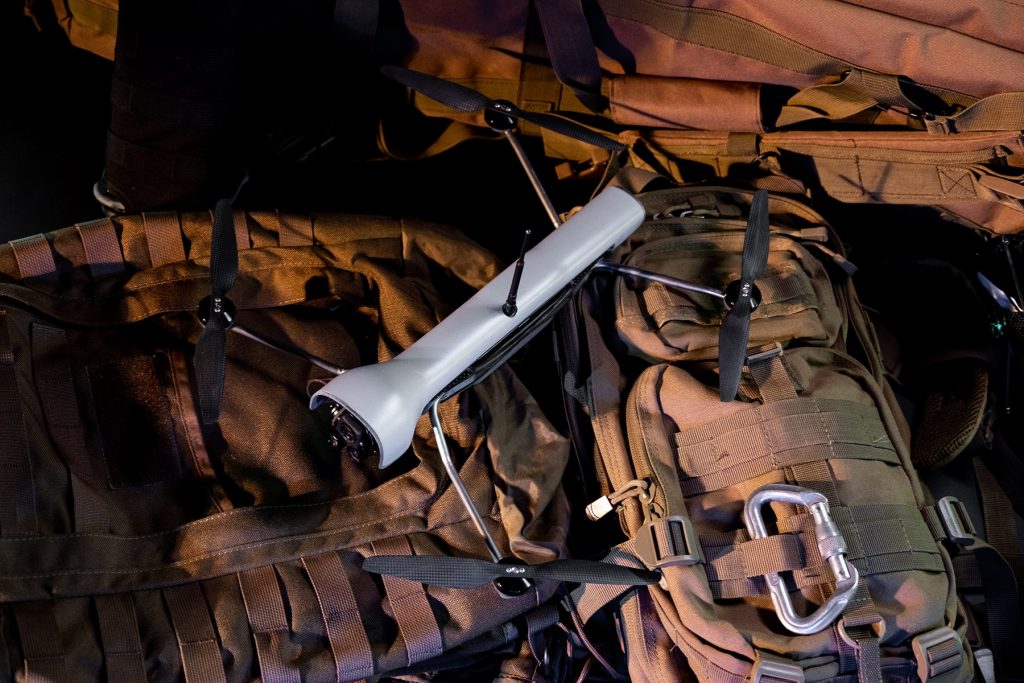
Contractors have pivoted, practically overnight, to keep in step with the DOD throughout the ongoing coronavirus pandemic response.
by Ellen Summey
The federal government usually moves like a freight train—it’s big, it’s heavy and it doesn’t like sharp turns. But the Army and its partners in industry have proven this year that they can turn on a dime if needed. In March, when COVID-19 first became part of our collective awareness in the U.S., the Army’s civilian and contractor workforce largely occupied offices in federal buildings across the country and around the globe. With the DOD mandate to “protect the force,” Army senior leaders made the rapid shift to maximum telework, essentially switching tracks at full speed.
“Our mission of delivering materiel capabilities to the warfighter is accomplished by the total force, including military, civilian and defense industrial base partners,” Army Acquisition Executive Dr. Bruce Jette said in a memo dated March 24. “Undoubtedly, the impacts of the nation’s emergency response to COVID-19 have been acutely felt by contractors and vendors providing services and products to the Army,” he said. In the memo, Jette asked contracting officers and program managers to encourage telework where possible, to minimize the health risks to the workforce. “The resiliency and strength of our team is a national asset and critical to the Army’s ability to meet mission requirements around the world,” he said.
So what has changed for DOD contractors in 2020? It depends on whom you ask.
STAYING ON TRACK
Eric Strauss, director of business development at Connected Logistics, said some things have changed but much remains the same. The company, which is based in Huntsville, Alabama, provides logistics, systems engineering and program support to DOD and the Army, as well as other government contractors. “For us, so much has remained the same,” Strauss said. “I think it’s a testament to the flexibility and adaptability of contractors and small businesses in general. Most of our folks frequently work offsite or from a home office or from a client site, so in many ways, we’ve continued doing that and it’s worked very well.”
But there are some new challenges to telework in 2020. Strauss and his wife have two school-age children. Though they’re both very used to working from home, “What we’re not used to is having kids run around and not be occupied during the day,” he said. “So that was certainly a big change.” Strauss and the company’s other leaders wondered how to keep employees focused on the mission amid all the distractions. “Things like trying to work through distance learning [with a child] when you’ve got meetings and phone calls and interviews and client things going on … we are much more focused on the outcomes and the deliverables and not nearly as worried about what time of day someone is on their computer. What we’ve realized, frankly, is that we’re just as productive, if not more.”
In fact, Strauss said Connected Logistics has submitted more proposals and received more contract awards since March than at any other point in the company’s history. “This change is not only going to drive our behavior during whatever the remainder of COVID is, but for a long time in the future,” he said. “We don’t need to be sitting side by side looking at the same screen or looking at the same projection on the wall to be productive. We can be just as effective as anywhere else when we are all flexible and available as needed.”
Looking ahead, Strauss hopes that remote work arrangements will become part of DOD culture. “If we as a company have the flexibility to hire more remote employees for DOD contracts, then we can ultimately offer a better product to our clients, often at a lower price.” That’s not just idle speculation—Connected Logistics has contracts with the Defense Logistics Agency, staffed by a remote team that is spread across the country. “We’ve got a program manager who is great in that environment, working with people across time zones, and it’s a very well-oiled machine,” he said. “That flexibility allowed us to recruit, hire and retain the most qualified people for the job, not the ones who happen to live closest to the office.”
CHANGING DIRECTION
For Megan Lacy and Corbin Hennen, co-founders of the xTechSearch 2.0-winning company Lumineye, the major change has been travel. “We traveled a lot in 2019,” Lacy said, “between all the testing and the xTechSearch competition and working with users outside the DOD. Pretty much all of that has halted for now.” The company is focused on hardware—its bread-and-butter product is a handheld sensor that can identify and locate pe
ople through walls. Developing and testing hardware requires in-person, hands-on work that doesn’t function well in a remote
setting. “Since we’re a small team, we can distance a little bit better and there’s less risk of people gathering together,” Lacy said. “But developing hardware from home is hard because that’s a very physical thing.” The team had to create schedules and routines for bringing hardware home, so that others could access the devices when needed. “I think we’ve adapted pretty well,” she said.
Hennen said the team has also adjusted its product demonstrations. “As an alternative to travel, we’ve gotten a lot better at doing remote demos,” he said. “That is not trivial when you’re trying to demo through-wall sensing, because it’s really difficult to capture that.” But Lacy and Hennen also see that as an opportunity to make their business more scalable. “You don’t necessarily need to spend the time, money, et cetera, to go fly out to places for an initial meeting,” if you can make those introductions remotely, Hennen said.
Overall, Lacy said she has been impressed with DOD’s response to COVID-19. “I know that for a lot of government jobs, you can’t just bring your laptop home. There are a lot of restrictions there,” she said. “I’ve been relatively impressed and pleasantly surprised with the Army’s transition to maximum telework.” Depending on the changing community health conditions and the progress toward a vaccine or effective treatment, Lumineye will have to address some additional challenges. “I think a lot of stuff is going to be business as usual, but there aren’t as many testing opportunities,” Lacy said. Hennen agreed, and said the company has tried to bridge gaps by focusing on its organizational culture during this time of uncertainty. “We’ve done a lot of culture building, trying to elaborate on what we stand for and what we value, over the last couple of months,” he said.

SEEING THROUGH WALLS: A screen grab from Lumineye’s “Through Wall Sensing Demo” video. (Photo courtesy of Lumineye)
MAINTENANCE REQUIRED
Erin Horrell is chief growth officer for Intelligent Waves LLC, which provides IT solutions to both public and private sector clients.
The company is in talks with the Army about its Hypori platform, a secure means of accessing military information systems with a personal mobile device. Despite the company’s emphasis on mobile communication, it was not a primarily remote company before COVID-19. Horrell said she’s seeing signs of strain among her team members. “Telework is beginning to have an impact, I believe—at least in my team.” She runs sales organizations, where many of the staff are extroverts by nature. “The very definition of an extrovert is meeting and greeting and crowds and people,” she said. Now “they’re not able to do that. That’s becoming problematic for them, I think mentally and professionally.”
Horrell said the company is also looking for ways to reduce the stress of constant video meetings and the added interruptions at home. “It is causing challenges. We can hear. We see things. I mean, everybody’s on video,” so she is requiring her staff to take breaks, and she recommends others do the same. “Block time on your calendar. Go outside. Take a walk. It’s simply not healthy or sustainable to sit in front of a computer for 10 hours a day, five days a week.” Her staff has been working longer hours, but she has seen teammates looking out for one another and trying to share the load. “I’ve seen a lot of people covering for others and taking things off other people’s plates, especially to accommodate the individuals with children at home—everybody is giving a helping hand.”
Teamwork makes the dream work, as the saying goes, and Horrell is looking for ways to team with DOD more effectively during the pandemic. From a sales perspective, she said the company craves more of the communication that would normally take place during conferences and industry events. “DISA [Defense Information Systems Agency] does a very good job every year of doing a virtual forecast to industry,” she said. “The Army has kept up those annual virtual events, but it’s different than the kind of engagement that happens at conferences. I think more interaction from the acquisition community would be helpful in terms of new initiatives, new requirements.” For example, she’s curious about COVID-19’s impact on the Army’s network modernization and systems migration plans. “Fill in the blanks for us,” she said. “We kind of feel in the dark.”

THE INDISPENSIBLE EYE: Vantage Robotics’ Vesper short-range reconnaissance vehicle is designed to be inexpensive, rucksack-portable, with vertical take-off and landing ability. The company says it will provide platoons with a rapidly deployable intelligence, surveillance, and reconnaissance capability to provide situational awareness. (Photo by Vantage Robotics)
AN OPERATIONAL OVERHAUL
Tobin Fisher is the CEO of Vantage Robotics, which is developing intelligence, surveillance and reconnaissance drones for the Army. For his company, “an awful lot” has changed. “I think the COVID pandemic is a real test for every company and their ability to adapt in the face of such

massive changes in how we actually do business.” And telework is just the tip of the iceberg. “We also have been doing a lot to change our office,” he said. Wearing masks was “a no-brainer,” but they’ve also created logs of everyone who has been in the office, tracking when they were present and who else was there at the same time. They started with temperature checks for staff, and then added pulse oximetry—a test used to measure the oxygen
level of the blood—and sniff tests—an exam that checks how a person’s diaphragm moves—for anyone entering the building. The goal is to have many “indicators of potential infection, as well as the ability to do contact tracing of anybody who’s been in the office at the same time, ever.”
As a next step, the company decided to find a better office space. “We’re in the process now of relocating the entire company to a new office that is designed around both maximum spacing for people and ventilation.” It’s much larger and is being renovated with safety in mind. “One whole wall of the office is all roll-up doors. The intent is to maintain many, many, many air changes an hour, which as far as we can tell, the best research shows that the best way to prevent COVID infection is to avoid stagnant air with lots of people in it.” Fisher sees this new office as crucial to the company’s continued success. “Our expectation, our plan is that these limitations will be there for the next 12 months and we’re planning accordingly,” he said. “We need the ability to run operations and run manufacturing. And that would be much more challenging with an office that can only have 25 percent of the team there at a time.”
One positive result of extended telework, Fisher said, is that his team is closer than ever. “Previously, having your kid run around in the background of a team conference call might be considered inappropriate,” he said. “Now it’s totally acceptable. I think we’re all getting to know each other a little better and that’s a good thing.” Doing away with some of those formalities has created new interpersonal connections, according to Fisher. “I think it makes us more cohesive as a group.” And the timing is good because Vantage Robotics has been growing. “We’ve nearly doubled the team since the lockdown started,” he said. “Bringing new team members on and maintaining that same sense of cohesion across the team is a real challenge.”
Despite the obvious hurdles, Fisher said his team has refused to let the pandemic stand in its way. “We’ve won $7.2 million in R&D [research and development] contracts since the COVID lockdown. We’ve been ramping and expanding production. We continue delivering units to customers,” he said. “The first priority will always be keeping everyone safe,” he said, “but the team has really risen to the challenge of getting the job done amidst these new constraints.” And he sees DOD as a responsive and reliable partner in this entire process. “I think DOD has been really effective in this transition,” he said. “Their willingness to continue to move ahead with our key contracts during this time … those financial resources are certainly critical to us.” And he understands the challenge of drastic change for such a large organization. “It’s much, much more challenging to be nimble as a million-person organization than it is for us as a 20-person organization,” he laughed. “I really respect how they’ve managed that.”
CONCLUSION
The Army relies on its partners in industry, and they are determined to deliver. Government contractors provide critical products and services for our nation’s warfighters, supporting their ability to prevent and respond to threats around the world. Through the unprecedented challenges of the COVID-19 pandemic, the ingenuity and flexibility of the have proven that sometimes even a freight train can turn on a dime.
For more information about resources for companies navigating the complexities associated with the coronavirus, visit the DOD Office of Industrial Policy website at: https://www.businessdefense.gov/coronavirus.
ELLEN SUMMEY provides contract support to the United States Army Acquisition Support Center at Fort Belvoir, Virginia, for SAIC. She holds an M.A. in human relations from the University of Oklahoma and a B.A. in mass communication from Louisiana State University. She has more than a decade of communication experience in both the government and commercial sectors.
Read the full article in the Fall 2020 issue of Army AL&T magazine.
Subscribe to Army AL&T News – the premier online news source for the Army Acquisition Workforce. ![]() Subscribe
Subscribe







